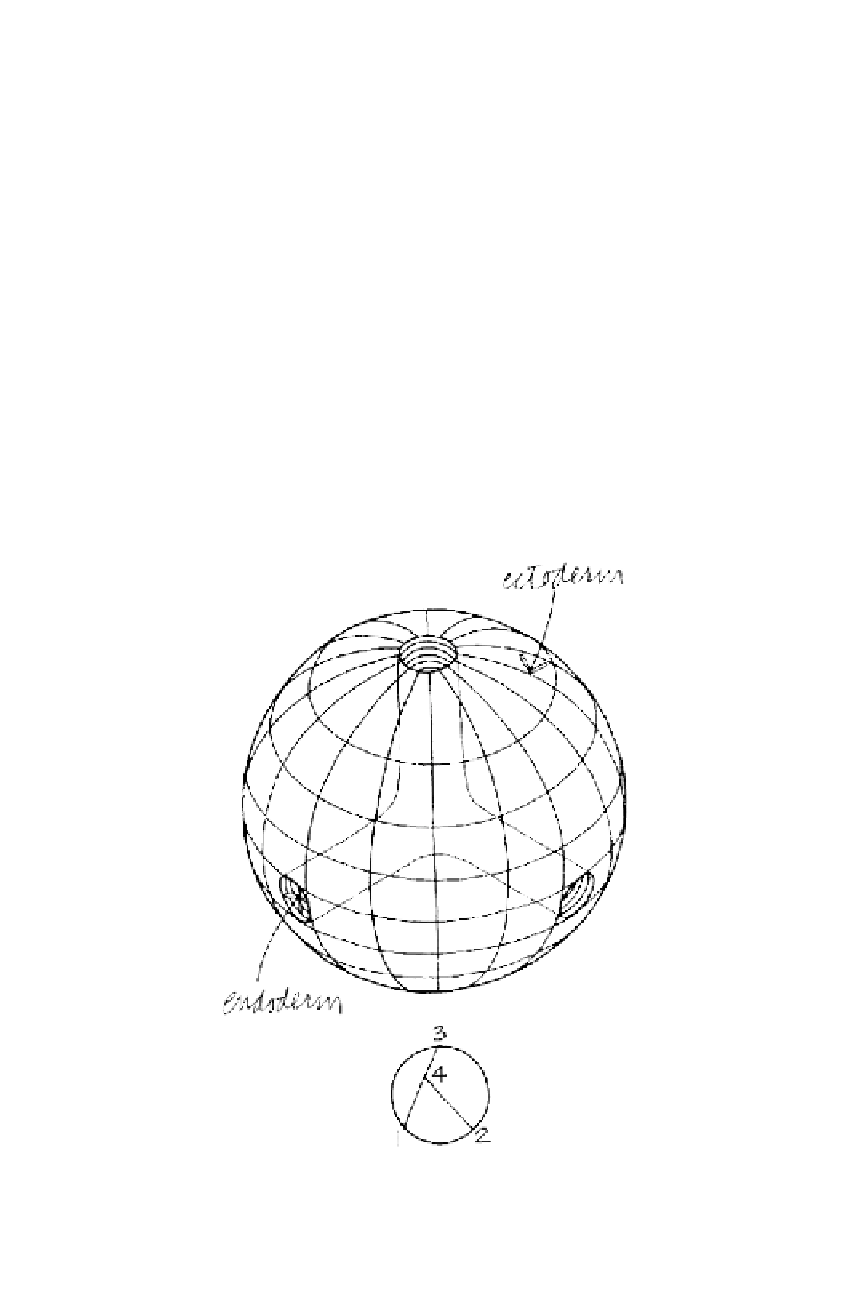Information Technology Reference
In-Depth Information
1.1 The elementary constituents, the cells, are, in turn, bounded, func-
tional, and structural units, however, they are not necessarily autonomous.
1.11 Autonomy of cells is progressively lost with increasing differenti-
ation in organisms of ascending complexity which, on the other hand, pro-
vides the appropriate “organic environment” for these units to maintain
their structural and functional integrity.
1.2 A living organism, W, is bounded by a closed orientable surface. Topo-
logically this is equivalent to a sphere with an even number 2
p
of holes
which are connected in pairs by tubes. The number
p
is called the genus of
the surface.
1.21 Should the histological distinction between ectoderm and endo-
derm be maintained, then a surface of genus
p
= (
s
+
t
)/2 is equivalent to a
sphere with
s
surface holes which are connected through a network or tubes
with
tT
-branches. Ectoderm is then represented by the surface of the
sphere, endoderm by the lining of the tubes (Fig. 3).
1.3 Any closed orientable surface is metrizable. Hence, each point on this
surface can be labeled by the two coordinates a, b, of a geodesic coordi-
nate system that may be chosen to cover the surface conveniently. One of
the properties of a geodesic coordinate system is that it is locally Cartesian.
FIGURE 3. Closed orientable surface of genus
p
= 2 (
s
= 3,
t
= 1 [
s
+
t
]/2 = 4/2 = 2].

Search WWH ::

Custom Search